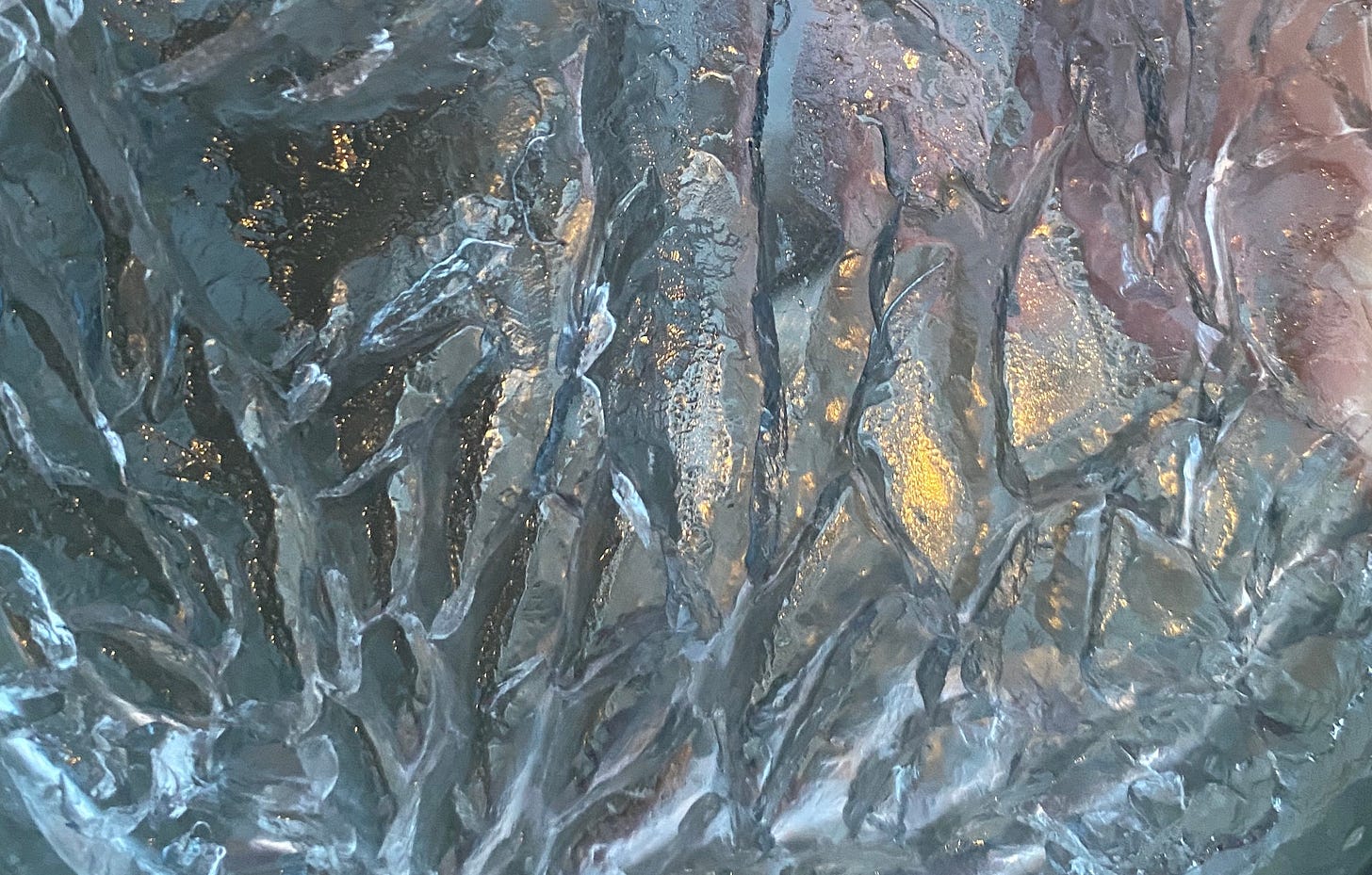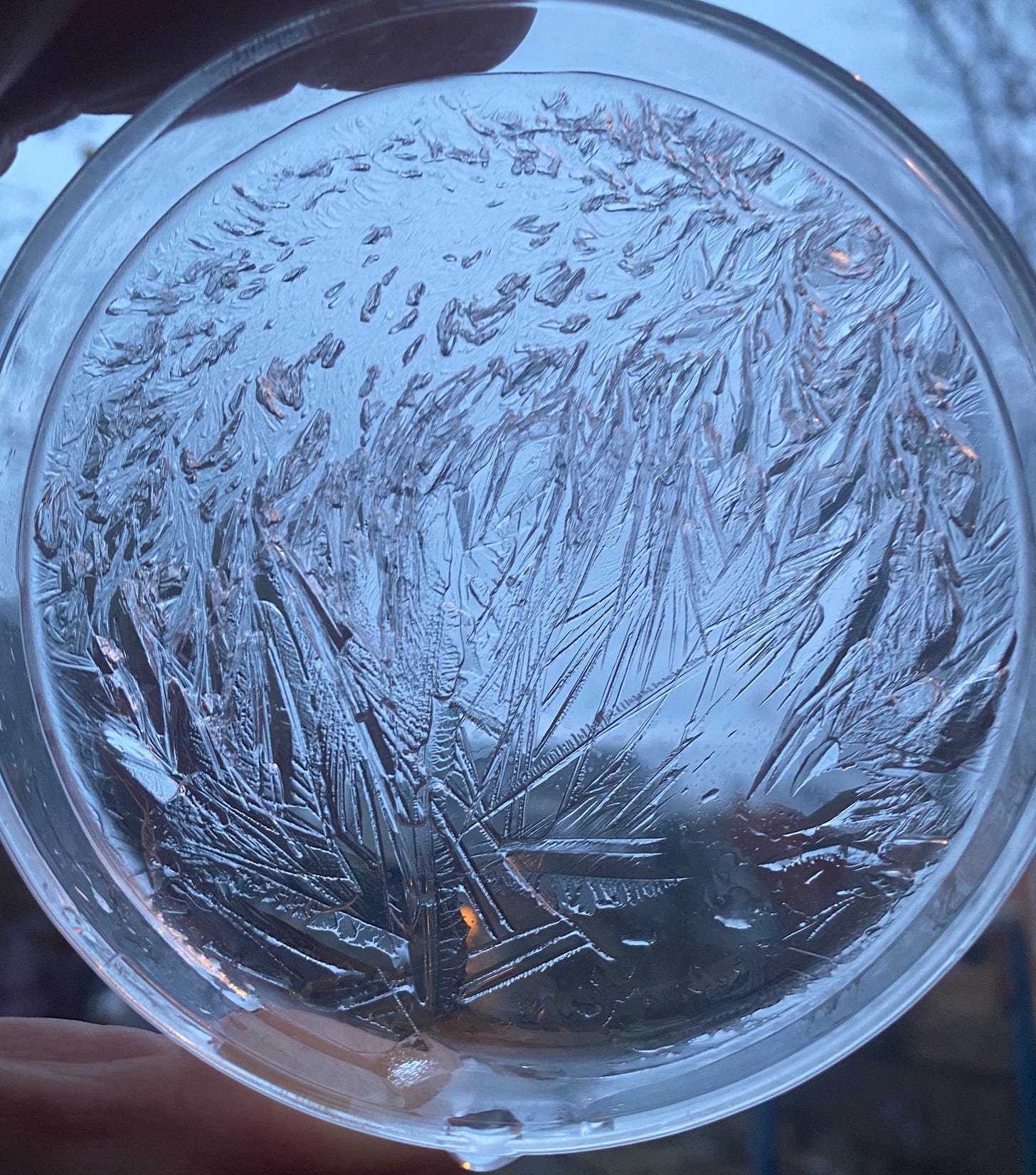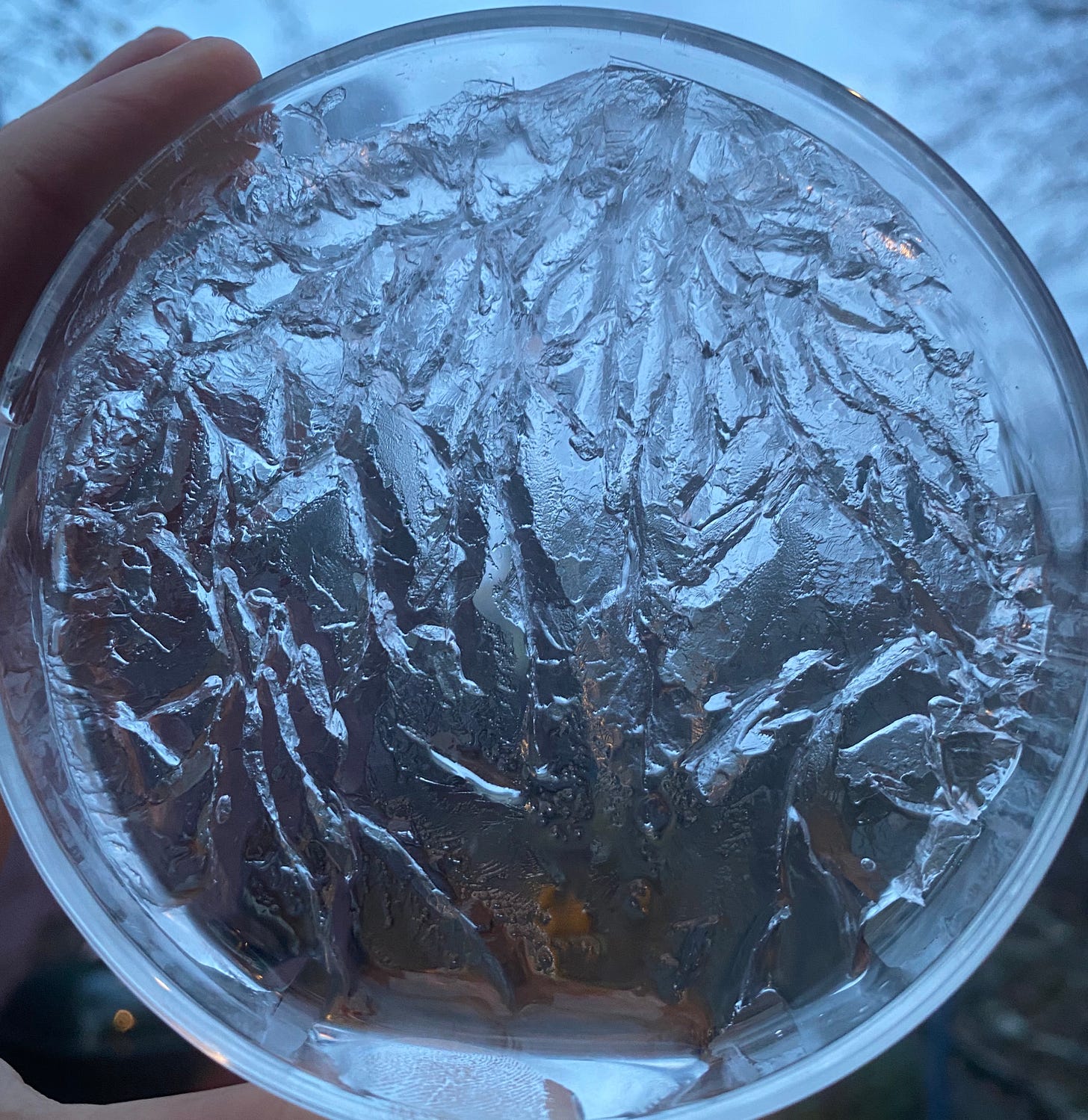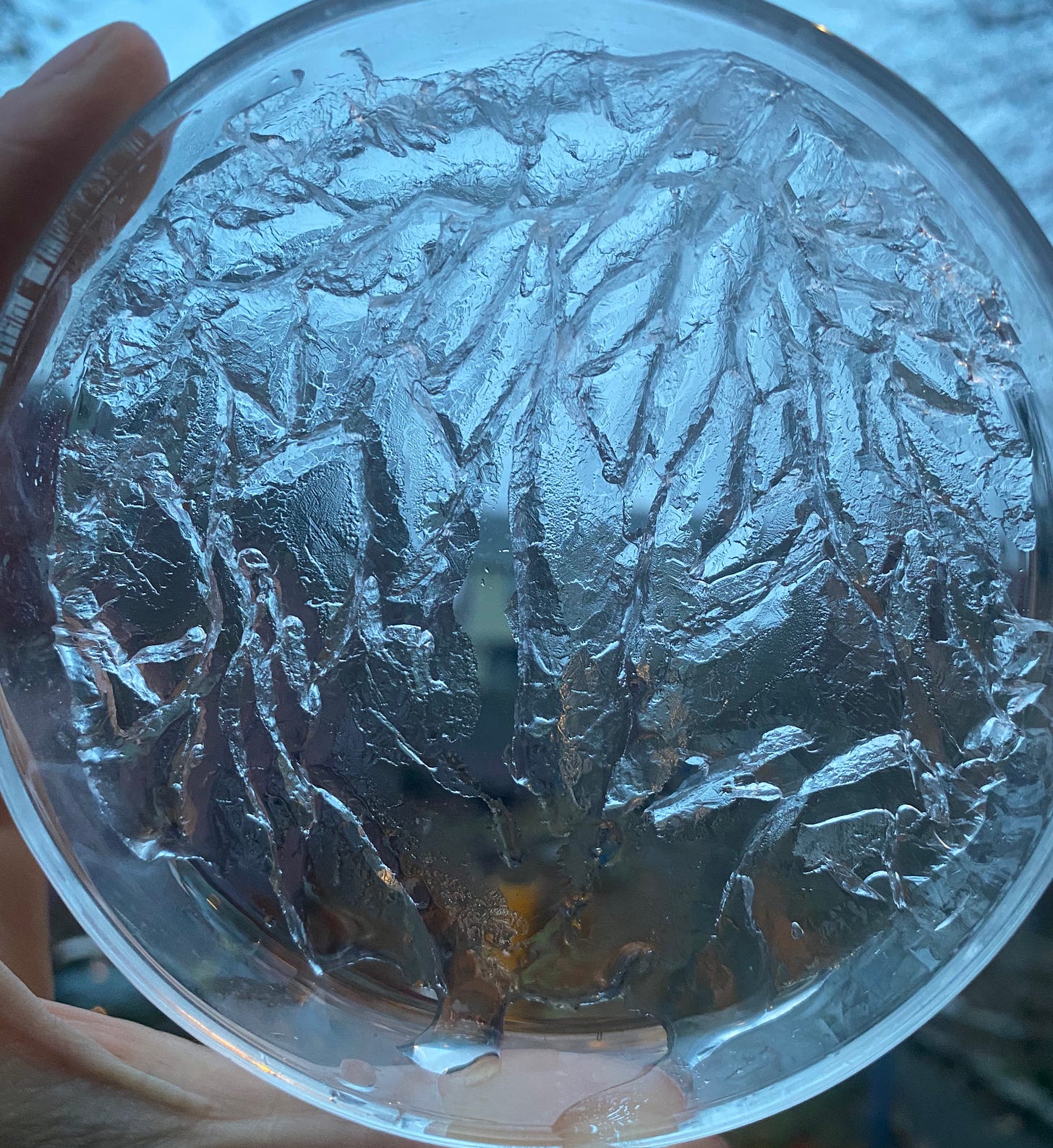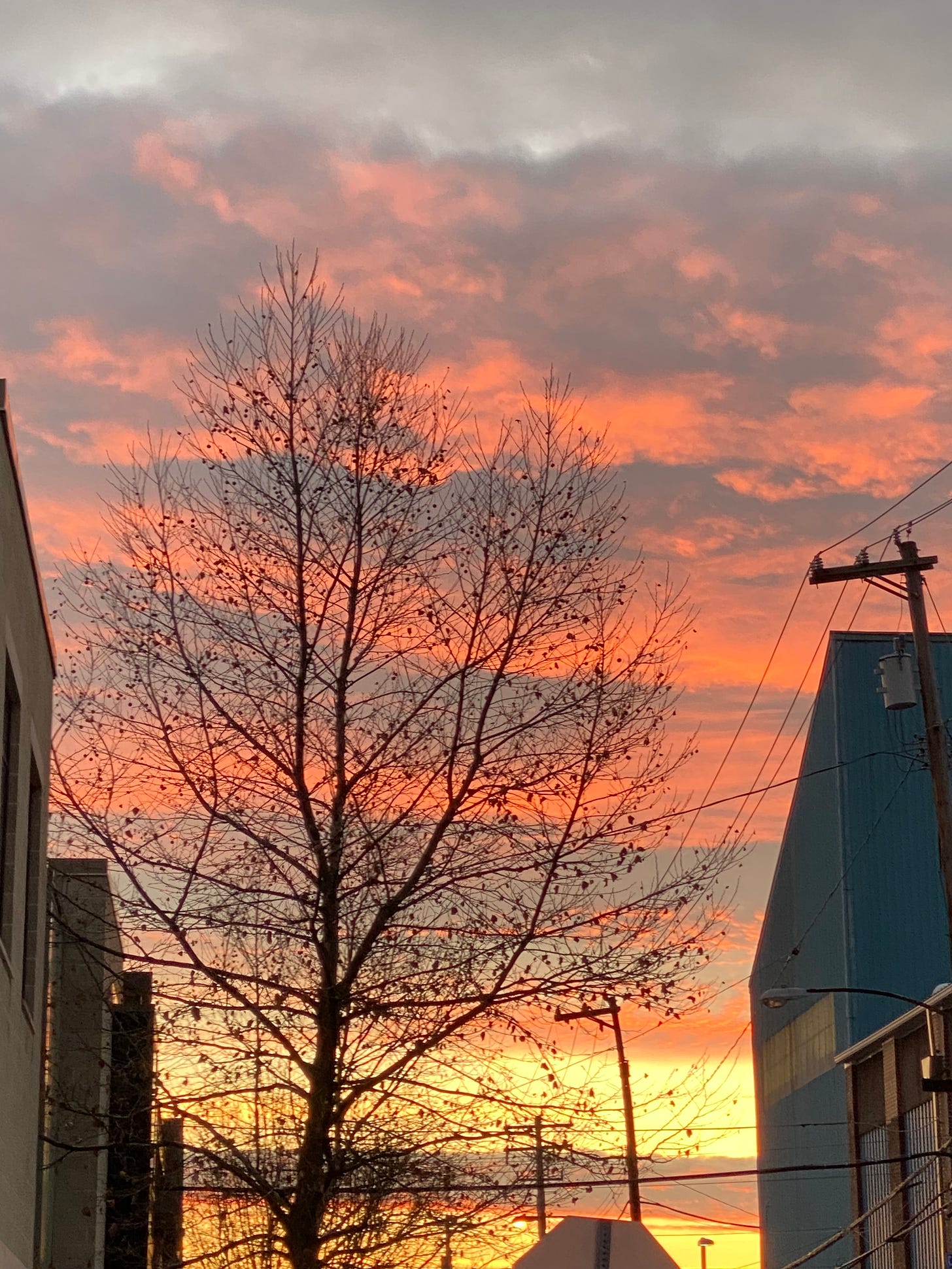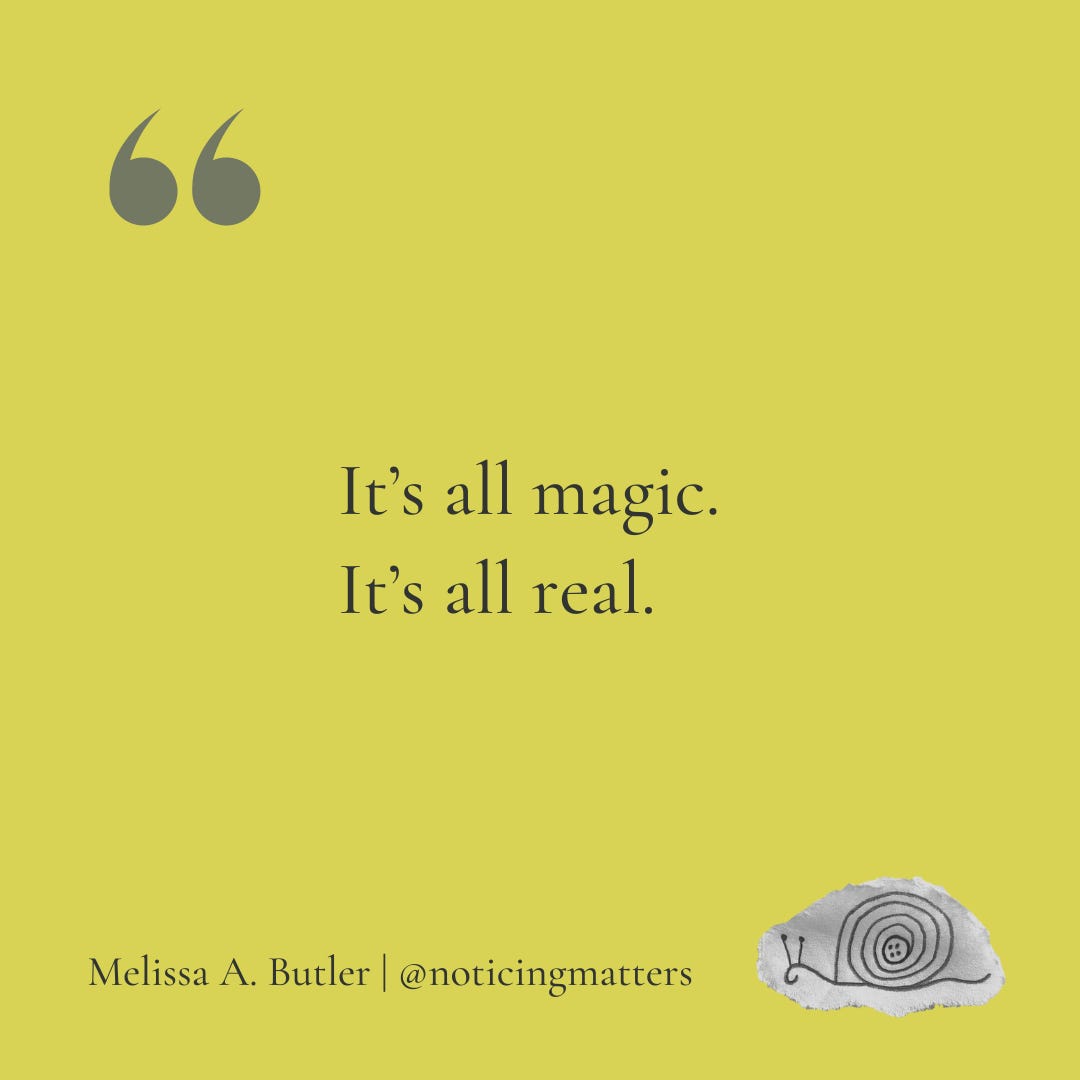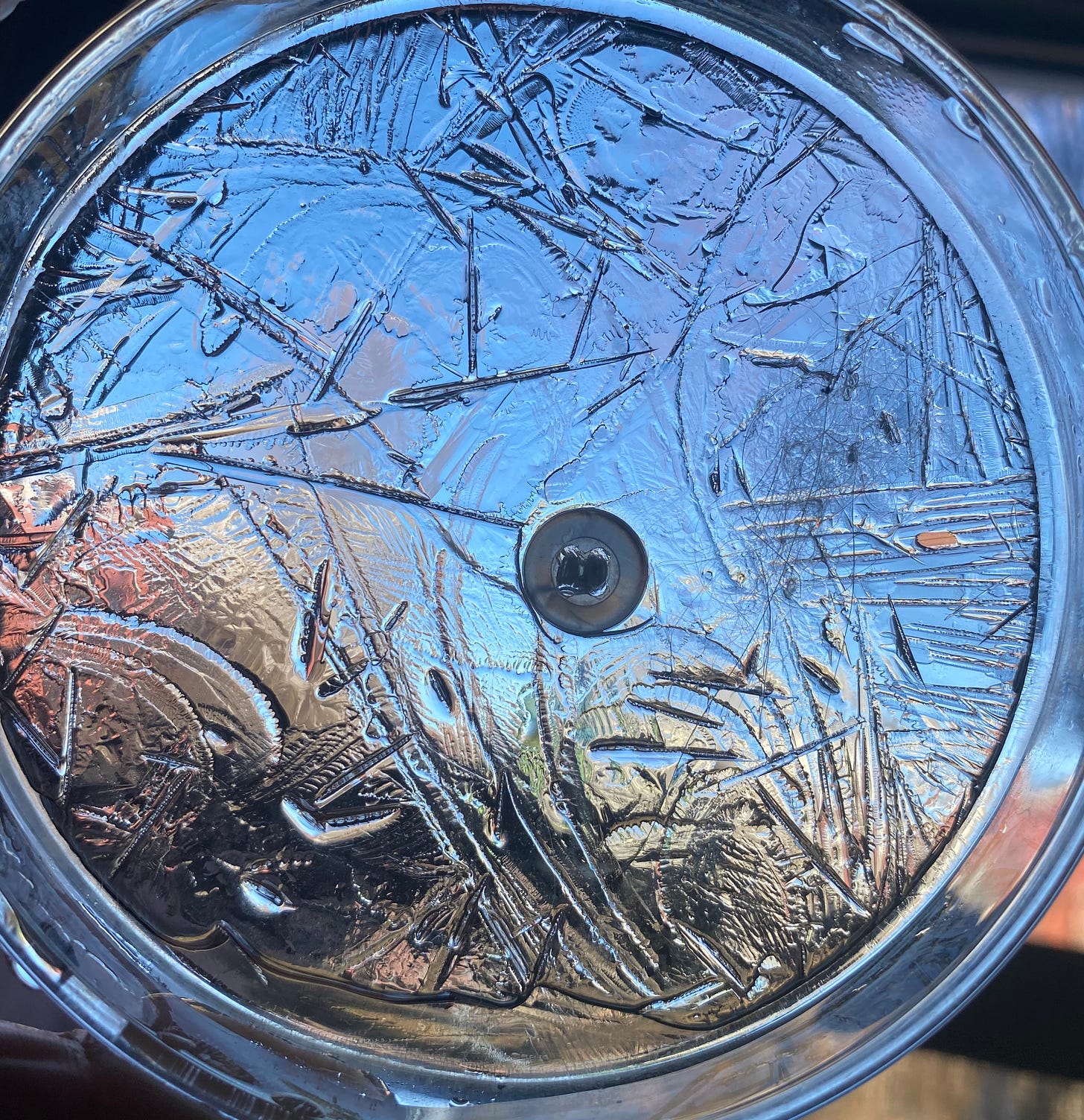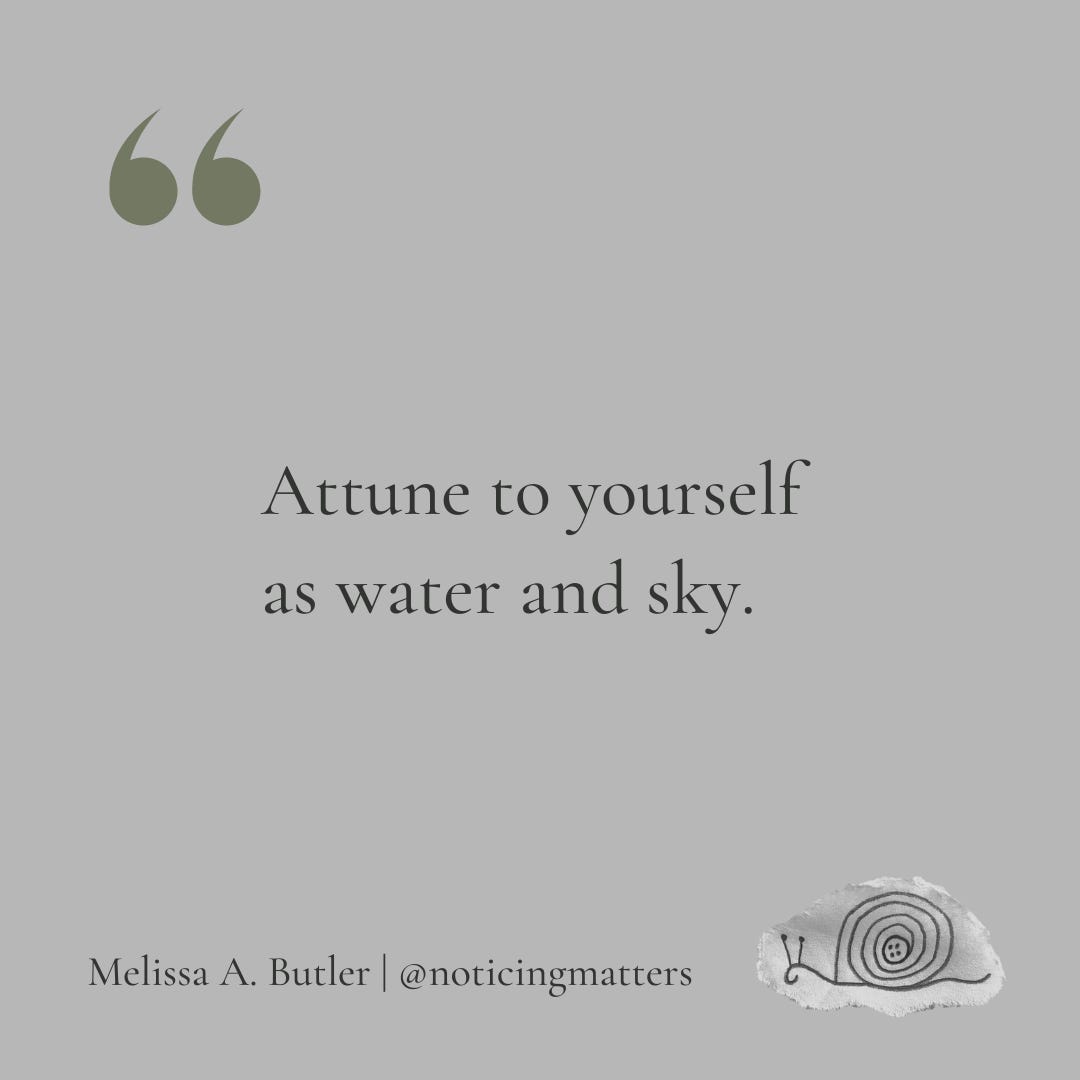2023 has been a year of seeing. Seeing the worlds outside of us. And seeing the worlds within. Seeing frames inside frames inside frames, and letting our aperture expand.
Each of us will choose what we say about this year—which experiences we name, what we let ourselves remember, the meanings we weave as story, what we call significant or revelation. Everything we think and see and feel and say is integral to our collective sky and spin.
I came into this year listening—following shifts of vibration and soft currents of reverence. Throughout the year, I saw and felt and spoke reverence. I stood barefoot on earth as reverence. I chanted reverence on rocks, in caves, next to streams, with others and alone. I ached and wept. I wondered and wanted. I essayed. I taught. I savored and was washed in awe. I let myself break and offered my breaking to the soil. All as reverence.
And I found the essence of reverence—both its core and its opening.
The essence of reverence is reverence.
When this clarity emerged, I heard, “See, it’s simpler than you think!” And I smiled. Ever since I stood with the star fairies and chanted my soul’s song on top of Pluto’s Cave, I’ve heard a consistent message on loop: “It’s simpler than you think. It’s simpler than you say.”
These words have guided me, and I’ve stayed with them, sculpting and listening, listening and sculpting ways to be and say what I see more simply: You are child, sit softly, hold a rock and listen.
Only now did I decide to look up the word origins of simple. This word I use so often. This little word in the world, who gets tossed around, easily dismissed, used in theory or reflective summary, spoken about as anomaly or romance, pushed to the side for another time when it seems more “feasible,” after the “difficult” things get “done.”
This small word who simply stays. “I’m right here,” it says. “I’m here for you to see when you’re ready.” “Even if you think you know me, I have more to teach.”
So it is.
Amidst the many definitional threads around the word simple, what resonates with me most is this:
without parts; having few parts.
To see anything—everything—as simple is to see it whole, complete, one.
The webs and tangles of cause-effect, part-subpart, if-then, inside-outside, up-down, you-me, them-us, real-unreal pull us away from the essence of anything, the truth of everything whole.
It’s easy to find stories of noisy, complicated, confused. Yes, there’s truth in the mess of it. The muck, the mud, heaps of compost, dissolving webs of thought.
There’s truth, too, in the worm. The worm who eats through peels and old and broken, who casts soil for what’s growing, what’s here already as light. We can see this when we see it simply. When we see it whole.
Watch a beetle. Listen to the sunrise.
Reach your arms wide, stretch through each finger.
Give one wish to one bird.
Trust in wings and lift and longing.
Sit with the rough and smooth, rigid and flow, ache as opening.
Let your heart whisper what it knows to your blood,
who tells the water,
who tells the sky.
It is only this.
Each morsel is the whole.
And we stand, feet on earth, breathing—in out, in out—water-bodied vessels tending to the expanse of all that’s real.
“It’s all matter and it all matters.” I learned this from water.
Water-as-being has been one of my central guides this year. It is water who has deepened my practice of reverence, and I can see now how water has been nudging me, all along, to deepen my practice of simple. To loosen what I see and know of parts. To have fewer parts.
Water taught me that my fascia is the sky. Not metaphor. Not memory. Now.
Always, I am water and sky.
You are, too.
We are all water beings.
We are all networked together with sky, as sky.
If this sounds like magic, it is.
Water is the embodied magic of everything.
You are, too.
I talked with water about this essay. I shared some questions and asked if water had anything to share with you, the human who will read this.
As seems to always be the case when I use Veda Austin’s technique for freezing and listening to water, I experienced endless surprise and delight, giggles and tears.
After an hour or so of conversation with water asking some specific questions, including: “What might emerge if humans could see themselves as water?” [image above], I received a loud message that I was over complicating things (as I’m prone to do). Water said, “Just ask me what I have to say!”
So I did. I held water in its petri dish cupped in my hands. I closed my eyes and asked, “What do you want to say to me, to other humans? What do you want us to know?”
When I took the petri dish from the freezer, I couldn’t believe my eyes. Water had climbed up, reaching out from the surface of the dish, forming itself as sculpture.
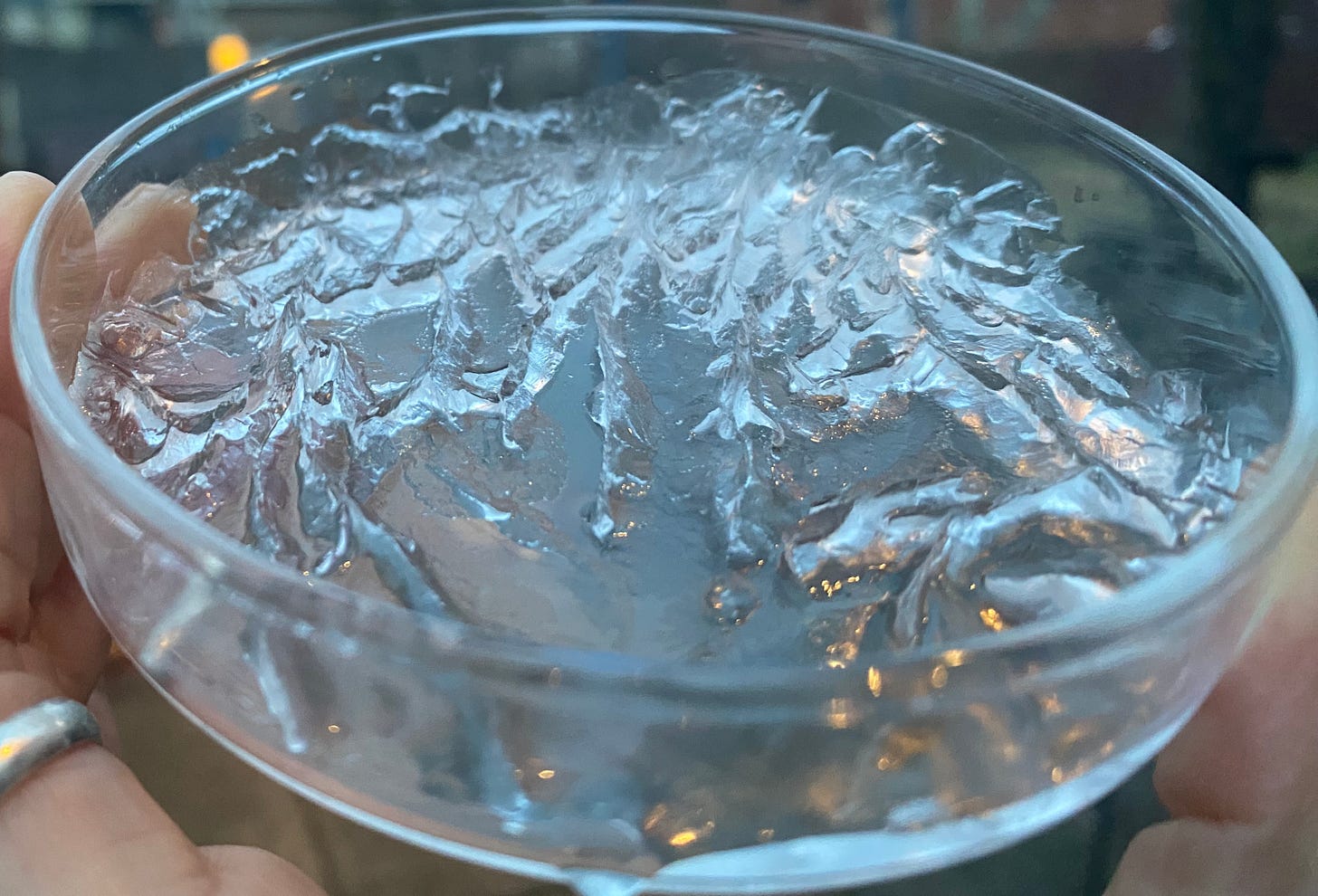
I squealed. I wept gratitude. I exclaimed utter bewilderment and awe. I took photos to share and look into more deeply later.
The transmission from water is clear:
I love you.
I see you.
See me.
My form is your forming.
I am the architecture of the aliveness
of everything.
I offered one question to an amount of water the quantity of one long sip, and water formed itself as if it wanted to jump out of the dish into my arms, into our collective human arms.
This is true. This is real.
Everything, here now.
*
As delight, Melissa
Wishing you a beautiful Solstice, slow-down, rest and reflect moment of crossing over into a new season, a new year, and boundless new openings that are exactly where you are.
Thank you for reading this essay of Noticing Matters. I spend many hours on each essay I share with you, and I am filled with gratitude for being able to connect with you, and other readers, through my words.
This is reader-supported work. If you appreciate what I have to share, consider becoming a paid subscriber, sharing this post with others, and/or gifting a subscription to a friend.
You can find more of my essays about water and water play in my Substack archive, including: It’s all matter and the full “On learning to listen to water as water” series: Being our re-seeing, Lessons in the overlaps, Time-space-song discoveries, and Opening into words.
My water exploration is inspired and influenced by the work of Veda Austin and Masaru Emoto.
If you’re interested in playing with water and learning to listen to its wisdom, I highly recommend getting Veda Austin’s guide: Collective Molecular Photography.
I love learning from teachers who are committed to curiosity, play, and the importance of rigorous self-reflection inside community and the expansive space of not-knowing. One such teacher for me is Joshua Shrei of The Emerald. If you don’t know his work already, I’d invite you to begin here:
The Revolution Will Not Be Psychologized.
The most recent episode is another lovely place to begin: For the Intuitives (Part 1). Part 2 should be released soon—I’m looking forward to it!
Thank you for being you.



